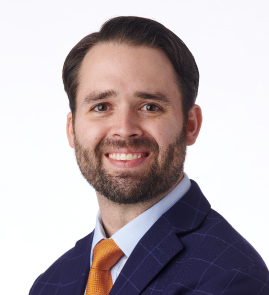You’ve spent 25 years of your life in school becoming an Ophthalmologist, putting you in the top 1% education level in the U.S. For all that time and hard work, you deserve a great opportunity. However, finding that perfect opportunity is not always easy, so here are a few tips to ensure that your first position is not only satisfying but well-compensated.
Open yourself up to as many locations as possible. A general rule of thumb is to have at least 3 different areas in which you would be willing to work. Variations in compensation, patient needs, and patient volume can be extreme depending on the geographic location. I often hear Ophthalmologists who only want to live in a very desirable city and be very busy from the start. Be warned, those two attributes don’t tend to go together. Successful practices in highly desirable areas typically take many years to build.
Look an hour away from highly desired locations. You will likely see much higher compensation and volume due to the simple law of supply and demand. Moving an hour from a highly desirable location will put you in area of high demand as an Ophthalmologist. You will see higher compensation packages, greater patient and surgical volumes, and you’re more likely to be busy immediately and you can…
Live somewhere in the middle. While an hour away may seem like a good distance, consider this. If you live in between where you wanted to work and where you actually work, your commute is 30 minutes either way. Your compensation will be higher, you’ll be busier from the get-go, and your cost of living may be lower in those first few years where loan repayment is looming.
If you do decide to work in a highly desirable location, be mindful of….
Restrictive Covenants. This seems simple but can sometimes be so simple it’s overlooked. Most new grads will not stay with the first practice they join for the duration of their career. If you do manage to find a practice in the heart of your most desired place to live, you will be forced to practice outside of that area if you leave that practice. Restrictive covenants can be bought out, but most are six-figure sums of money. This should be reason for extra careful consideration for anyone seeking to own their own practice one day, as restrictive covenants can delay your timeline by typically two years or force you to set up shop elsewhere.
Compensation. Base salaries can vary greatly with some as high as $350,000 in less desirable places and as low as $150,000 in very desirable places. Generally, the trend follows the laws of supply and demand: the more desirable locations have more Ophthalmologists and create an employer driven market. Less desirable locations have fewer Ophthalmologists and create a candidate driven market. In addition, lower patient and surgical volume translates to fewer production bonuses. More desirable locations also tend to offer fewer employee benefits. It’s always a good idea to consult with colleagues about what is fair compensation just remember to look at the whole compensation package as bases tend to vary greatly.
To be marketable, keep your skills current. If you plan to complete a fellowship, try to keep up your cataract skills.
- Performing cataracts will keep you busy until you can build your specialty case load.
- Even if a practice does have high volume in your specialty, you’ll likely be competing with more experienced specialists for that position. Many of these experienced specialists don’t want to do cataracts either.
Oculoplastic, Pediatric, and Glaucoma Specialists need to be particularly mindful of this as these types of cases take up more OR time and can be less profitable to practices. Any additional skills you can acquire are beneficial. For instance, if you know the area in which you would like to practice has a large glaucoma patient base but you are a comprehensive Ophthalmologist, try to pick up some minor glaucoma procedures such as Istents or Kahook Dual Blade procedure.
Investigate the need for your specialty in the area where you want to live. If you’re specialized, the population, age distribution of the population, and overall health of the population can matter greatly. For instance, in Denver where the median age is younger and population is healthier overall than the national average, there won’t be as much need for a retina surgeon. However, there may be more need for a pediatric Ophthalmologist. You should also look at the number of practices and specialties in a given area. San Diego is highly desirable for many Ophthalmologists, but if you’re primarily a refractive surgeon, much of the refractive surgery volume has been consumed there. A simple search on the internet will reveal many practices large and small who are doing and have done a very high volume or refractive surgery; they own the market there.
I hope this has given you some food for thought as you look for your first practice. You can find many resources and tools to assist you with your job search. Ultimately, if what you’re looking for and where you want to be aren’t matching up; adapt, learn, make yourself more marketable, and open your search area.
Editor’s note: The above article is a guest post from Matthew Johnson, an ophthalmology recruiter at ETS Vision. Matt contacted me offering to share some job-search pearls with interested readers. Contact Matt at the following email address to learn more about potential career opportunities: mjohnson@etsvision.com
What job search questions do you have for Matt?
What tips do you have for finding a job through physician recruiting companies?
What other tips do you have for finding your first job after training?








